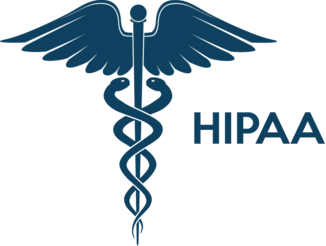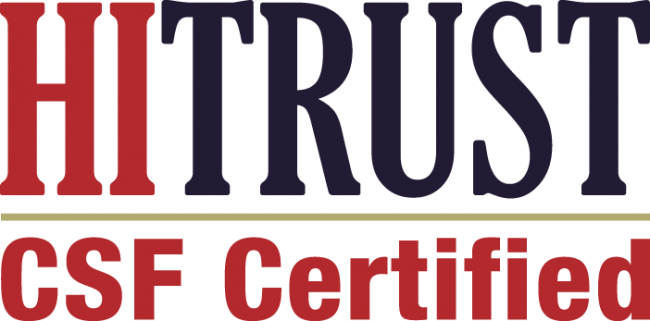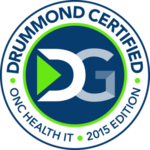In today’s rapidly evolving healthcare landscape, medical organizations are under immense pressure to optimize operations while maintaining high-quality patient care. One of the most transformative strategies healthcare systems can implement is centralized patient referral management—a solution that has proven to double staff efficiency across multiple sites while significantly improving patient outcomes.
The Current State of Healthcare Referral Management
The healthcare referral management market is experiencing unprecedented growth, reflecting the urgent need for streamlined processes. The Referral Management Market was valued at USD 3.56 billion in 2023 and is expected to reach USD 11.15 billion by 2032, growing at a CAGR of 13.51%. This explosive growth indicates that healthcare organizations worldwide are recognizing the critical importance of modernizing their referral processes.
Traditional referral systems are plagued with inefficiencies that drain valuable staff resources. Manual processes involving phone calls, fax machines, and paper-based tracking create bottlenecks that can delay patient care by days or even weeks. Staff members spend countless hours coordinating between departments, following up on incomplete referrals, and manually entering data into multiple systems.
The Centralized Referral Management Revolution
Centralized patient referral management represents a paradigm shift from fragmented, site-specific processes to unified, technology-driven coordination. This approach consolidates all referral activities into a single, integrated platform that connects multiple healthcare sites, specialties, and providers.
Leading solutions like the HealthViewX Referral Management platform exemplify this transformation. As the only standalone Patient Referral Management solution certified for Stage 3 Meaningful Use for Transition of Care, HealthViewX has demonstrated the tangible benefits of centralized referral management, with healthcare organizations reporting significant operational improvements, including a 40% reduction in referral revenue leakage, a 90% reduction in incomplete referrals, and a 35% increase in referral loop closures.
Key Components of Centralized Systems
Unified Digital Platform: All referral requests, approvals, and tracking occur through one comprehensive system accessible across all organizational sites.
Automated Workflow Management: Intelligent routing ensures referrals reach the appropriate specialists quickly while automatically handling routine administrative tasks. Advanced platforms like HealthViewX provide intelligent provider matching and seamless end-to-end automated workflows that eliminate manual intervention.
Real-Time Communication: Instant notifications and updates keep all stakeholders informed throughout the referral process.
Comprehensive Analytics: Detailed reporting provides insights into referral patterns, bottlenecks, and performance metrics across the entire network.
Doubling Staff Efficiency: The Measurable Impact
Healthcare organizations implementing centralized referral management systems consistently report dramatic improvements in staff productivity and operational efficiency.
Administrative Time Reduction
One of the most significant efficiency gains comes from eliminating repetitive administrative tasks. Staff members no longer need to manually track referrals across multiple systems or spend hours on phone calls coordinating appointments. The gastroenterology department went from a 54.2% to a 67.3% increase in completion rate from referrals just after six months of adopting centralized scheduling processes.
Streamlined Communication
Centralized systems eliminate the communication gaps that traditionally plague multi-site operations. Instead of staff members at different locations working in silos, everyone operates from the same real-time information. This unified approach reduces duplicate work and ensures consistent patient experiences across all sites.
Enhanced Resource Allocation
With comprehensive visibility into referral patterns and demand across multiple sites, healthcare administrators can optimize staff allocation and scheduling. Resources can be dynamically redistributed based on real-time needs, ensuring maximum efficiency without compromising patient care quality.
Industry Statistics Supporting Centralized Approaches
The data supporting centralized referral management implementation is compelling:
Market Growth: Referral Management Market size was valued at USD 4.17 Billion in 2023 and is projected to reach USD 13.48 Billion by 2031, growing at a CAGR of 15.8%.
Technology Adoption: Healthcare organizations are rapidly embracing digital referral solutions, with the inbound category likely to grow at a CAGR of 17.9% during 2024–2030, as hospitals and specialty centers receive increasing numbers of digital referrals.
Referral Volume Impact: Healthcare facilities report significant improvements in processing capacity, with some departments seeing completion rates improve by over 20% within the first six months of implementation.
Multi-Site Implementation Strategies
Successfully implementing centralized referral management across multiple sites requires careful planning and execution.
Phase 1: Assessment and Planning
Organizations must begin with a comprehensive assessment of current referral processes across all sites. This includes mapping existing workflows, identifying common pain points, and establishing baseline efficiency metrics. Understanding the unique characteristics of each site while identifying standardization opportunities is crucial for success.
Phase 2: Technology Infrastructure Development
Building a robust technology infrastructure capable of supporting multiple sites simultaneously is essential. This includes ensuring adequate network capacity, implementing security protocols for patient data protection, and establishing integration capabilities with existing electronic health record systems.
Phase 3: Staff Training and Change Management
Successful implementation requires comprehensive staff training programs that address both technical skills and process changes. Change management strategies must acknowledge that different sites may have varying levels of technology adoption and resistance to new processes.
Phase 4: Gradual Rollout and Optimization
Rather than implementing across all sites simultaneously, successful organizations typically use a phased rollout approach. This allows for system refinement based on real-world feedback and helps ensure smooth transitions without disrupting patient care.
Overcoming Implementation Challenges
While the benefits of centralized referral management are clear, organizations must address several common implementation challenges.
Technology Integration Complexities
Many healthcare organizations operate diverse technology ecosystems across different sites. Ensuring seamless integration between new referral management systems and existing infrastructure requires careful technical planning and often custom development work.
Standardization Across Sites
Different sites may have developed unique processes and workflows over time. Achieving standardization while respecting site-specific needs requires diplomatic change management and flexible system configuration.
Staff Resistance and Training
Healthcare workers are often skeptical of new technology implementations, particularly when they disrupt established routines. Comprehensive training programs and clear communication about benefits are essential for overcoming resistance and ensuring successful adoption.
Measuring Success: Key Performance Indicators
Organizations implementing centralized referral management should track specific metrics to validate their efficiency improvements:
Processing Time Reduction: Measure the time from referral initiation to specialist appointment scheduling across all sites.
Staff Productivity Metrics: Track the number of referrals processed per staff member per day, comparing pre- and post-implementation performance.
Communication Efficiency: Monitor the reduction in phone calls, emails, and other manual communication methods required for referral coordination.
Patient Satisfaction Scores: Evaluate improvements in patient experience related to referral processes and appointment scheduling.
Error Rate Reduction: Track decreases in referral processing errors, missed appointments, and incomplete documentation.
Future Trends and Innovations
The healthcare referral management landscape continues to evolve with emerging technologies and methodologies.
Artificial Intelligence Integration
AI-powered systems are beginning to provide intelligent referral routing based on specialist availability, patient preferences, and clinical appropriateness. These systems can predict optimal referral paths and automatically handle routine decision-making processes.
Predictive Analytics
Advanced analytics capabilities are enabling healthcare organizations to anticipate referral demand patterns and proactively adjust staffing and resources across multiple sites. This predictive approach further enhances efficiency by preventing bottlenecks before they occur.
Mobile Accessibility
Modern referral management systems increasingly offer mobile applications that allow healthcare providers to manage referrals from anywhere, further improving efficiency and responsiveness.
Return on Investment Considerations
Healthcare organizations considering centralized referral management implementation should evaluate both direct and indirect return on investment factors.
Direct Cost Savings
Immediate savings come from reduced administrative overhead, decreased phone and communication costs, and improved staff productivity. Many organizations report payback periods of 12-18 months based solely on administrative efficiency gains.
Indirect Benefits
Improved patient satisfaction, reduced liability exposure from referral delays, and enhanced provider relationships contribute additional value that may be more difficult to quantify but significantly impact organizational success.
Long-Term Strategic Value
Centralized referral management systems provide the foundation for future healthcare innovations, including population health management, value-based care initiatives, and advanced analytics programs.
Best Practices for Sustained Success
Maintaining the efficiency gains achieved through centralized referral management requires ongoing attention and optimization.
Continuous Process Improvement
Regular review and refinement of referral processes ensure that systems continue to meet evolving organizational needs. This includes gathering feedback from staff across all sites and implementing iterative improvements.
Performance Monitoring
Consistent monitoring of key performance indicators helps identify potential issues before they impact efficiency. Automated reporting and dashboard systems provide real-time visibility into system performance across all sites.
Staff Engagement and Training
Ongoing training programs and engagement initiatives help ensure that staff members continue to maximize system capabilities and embrace process improvements.
Conclusion: The Path Forward
Centralized patient referral management represents one of the most effective strategies healthcare organizations can implement to double staff efficiency across multiple sites. The combination of streamlined processes, automated workflows, and unified communication creates significant improvements in productivity while enhancing the quality of patient care.
Platforms like HealthViewX have proven that these efficiency gains are not theoretical but measurable and achievable. With documented results showing a 30% reduction in patient phone calls and significant improvements in referral completion rates, modern referral management solutions provide healthcare organizations with the tools necessary to transform their operations across multiple sites.
The referral management solution will help agencies increase staff efficiency, expand referral sources, and improve the timeliness of care. As healthcare organizations face increasing pressure to optimize operations while maintaining quality, centralized referral management systems provide a proven path to achieving these seemingly competing objectives.
The market data indicate that healthcare organizations worldwide are recognizing the value of these systems, with rapid growth in adoption and investment. Organizations that implement centralized referral management today position themselves at the forefront of healthcare operational excellence, creating sustainable competitive advantages while delivering superior patient experiences.
The journey toward doubled staff efficiency through centralized referral management requires careful planning, dedicated resources, and committed leadership. However, the measurable benefits in productivity, patient satisfaction, and operational effectiveness make this investment essential for forward-thinking healthcare organizations operating across multiple sites.
Success in today’s healthcare environment demands innovative approaches to traditional challenges. Centralized patient referral management represents exactly this type of innovation—a technology-enabled solution that transforms fundamental healthcare processes while delivering quantifiable improvements in efficiency and patient care. Organizations that embrace this transformation today will lead the healthcare industry’s evolution toward more efficient, effective, and patient-centered care delivery.








